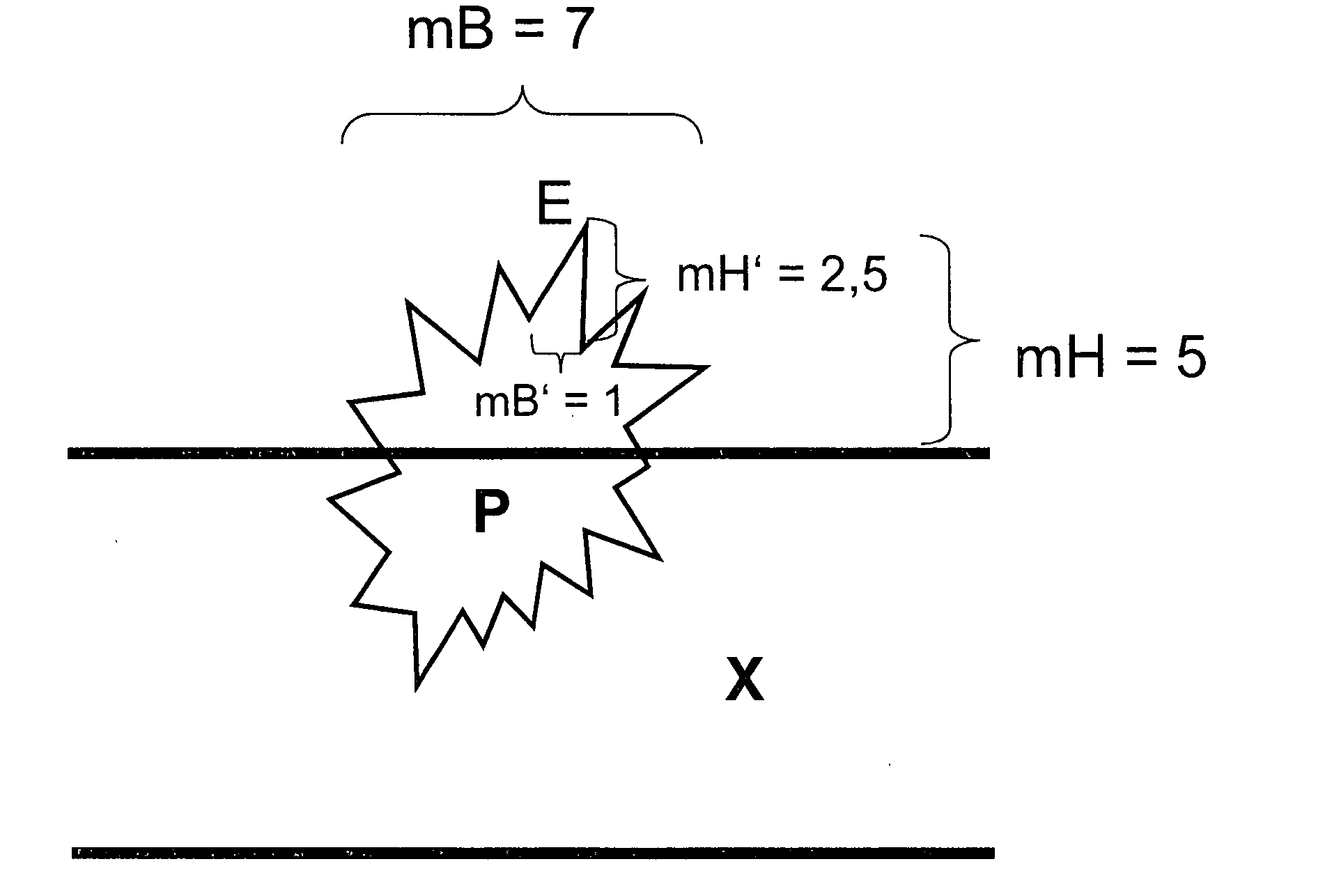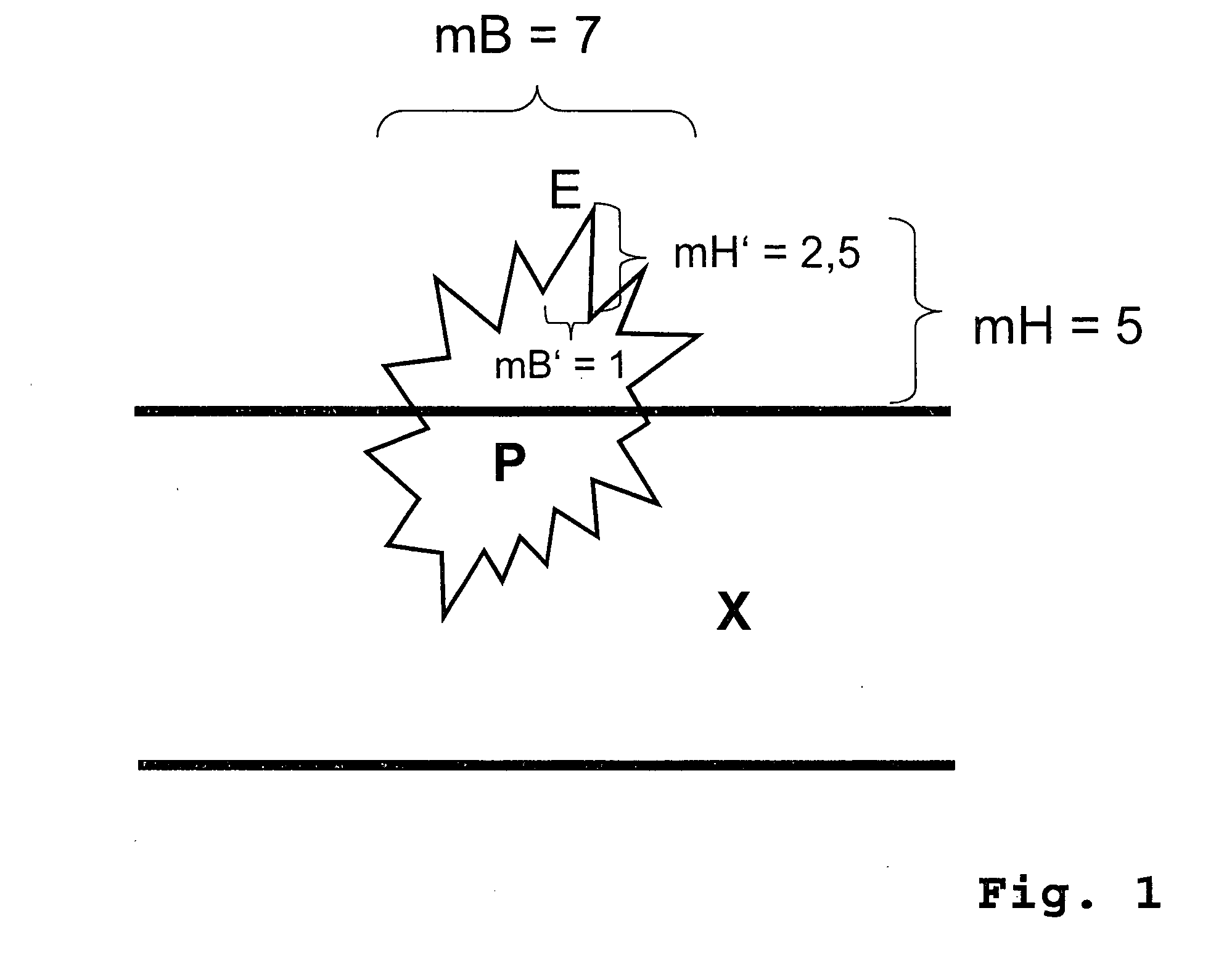Self-cleaning surfaces comprising elevations formed by hydrophobic particles and having improved mechanical strength
a technology of hydrophobic particles and self-cleaning surfaces, which is applied in the direction of roads, instruments, traffic signals, etc., can solve the problems of inability to bring about a marked reduction of interfacial energy, time-consuming and expensive surface cleaning, and poor wetting
- Summary
- Abstract
- Description
- Claims
- Application Information
AI Technical Summary
Problems solved by technology
Method used
Image
Examples
example 1
[0064] A 25 μm thick finish coat of a UV-curable acrylate finish, prepared from a mixture of three parts by weight of hexanediol diacrylate and 2 parts by weight of pentaerythrityl tetraacrylate, to which, based on this mixture, additionally 10% by mass of Plex 4092 F from Röhm, 10% by mass of methyl methacrylate, 10% by mass of 2-hydroxyethyl methacrylate and 2% by mass of Darocur 1173 (Ciba Spezialitätenchemie) as a curing agent were added, was applied by means of a knife coater to sheets of polymethyl methacrylate. A mixture of 95% by mass of pyrogenic water-repellent silica (Aerosil VPLE 8241, Degussa AG) and 5% by mass of a pulverulent wax (cf. Table 1) was applied to the still moist finish coat by means of an electrostatic spray system from Nordson. After the UV curing of the finish, the surfaces obtained were assessed with respect to their self-cleaning properties. It was found that a water drop of 20 μl rolled off by itself (was repelled) from all treated sheets at a small a...
example 2
[0067] A 25 μm thick coat of a UV-curable acrylic finish system according to example 1, which additionally comprises, based on the mixture, 2% by mass of the leveling agent BYK 3700 (BYK), was applied to sheets of polymethyl methacrylate by means of a film-drawing frame. Various particle mixtures were scattered onto the still moist finish coats by hand using a “tea strainer”. The particle mixtures were obtained by mixing 2 g of pyrogenic water-repellent silica (Aerosil VPLE 8241, Degussa AG) with wax particles Copo-Wax 4110 or Copo-Wax 4125 in the amount stated in table 2 in a 30 ml bottle by means of a magnetic stirrer. Excess particles were removed from the surface by tapping. After the UV curing of the finish, the sheets obtained or the surfaces thereof were assessed as above with respect to their self-cleaning properties.
TABLE 2Addition ofAerosilLotusTestWax(%)Remarkeffect8Copo-Wax 4110 5+++!9Copo-Wax 411010+++!10Copo-Wax 411050+++!11Copo-Wax 4110Pure waxApplication irregular+...
PUM
| Property | Measurement | Unit |
|---|---|---|
| mean particle size | aaaaa | aaaaa |
| size | aaaaa | aaaaa |
| diameter | aaaaa | aaaaa |
Abstract
Description
Claims
Application Information
 Login to View More
Login to View More - R&D
- Intellectual Property
- Life Sciences
- Materials
- Tech Scout
- Unparalleled Data Quality
- Higher Quality Content
- 60% Fewer Hallucinations
Browse by: Latest US Patents, China's latest patents, Technical Efficacy Thesaurus, Application Domain, Technology Topic, Popular Technical Reports.
© 2025 PatSnap. All rights reserved.Legal|Privacy policy|Modern Slavery Act Transparency Statement|Sitemap|About US| Contact US: help@patsnap.com


